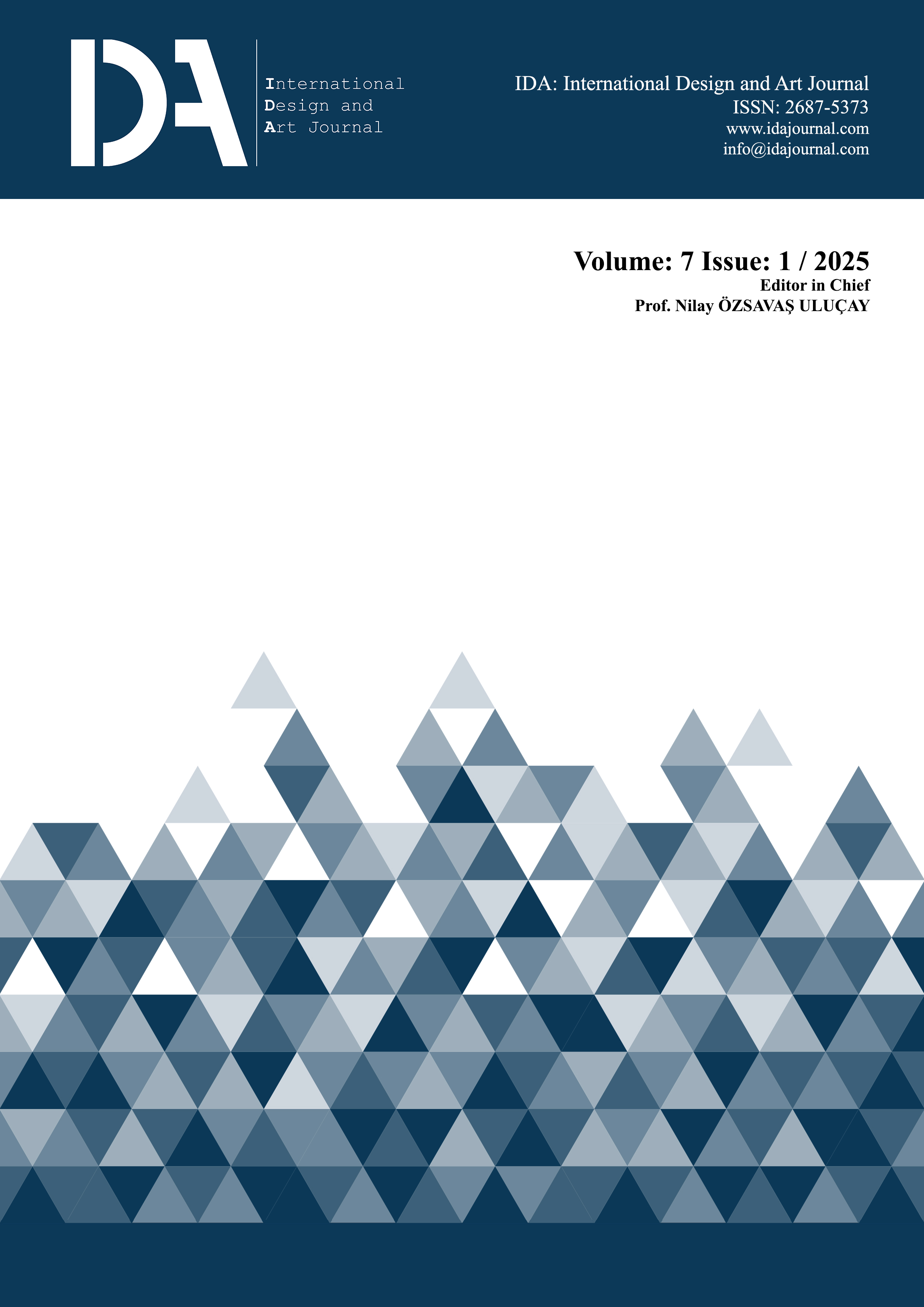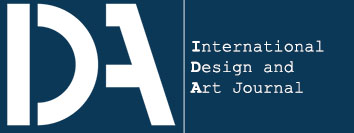A methodological approach to the investigation of regional variations in Artuqid Islamic architecture
Keywords:
Architectural heritage, Historical buildings, Islamic architecture, Artuqid, Kevin LynchAbstract
Anatolia is a geographical area characterized by various architectural styles from different civilizations and offers a rich historical and cultural heritage in terms of Islamic architecture. This study aims to examine the spatial features of the Harput, Silvan, and Kızıltepe Great Mosques built during the Artuqid period and determine the effects of regional differences on the architectural features. The study discusses the historical and architectural characteristics of mosques and adopts a method of analysis based on Kevin Lynch’s urban images of paths, edges, districts, nodes, and landmarks. With this method, the plan diagrams, spatial organizations, and facades of the mosques were typologically compared, and their relationships with regional variations were examined. The results reveal that the mihrab dome and the harim plan scheme are significant in the key design decisions in the spatial configuration of the three mosques. However, different architectural approaches, such as the porticoes and interior walls, were developed depending on regional requirements and functions. The study emphasizes the importance of these mosques in Islamic history and provides a framework for examining the relationship between the monumental structures and urban images by using the proposed methodology.
References
Aktur, H. (2012). An Artuqid building: Dunaysir Great Mosque. 2nd International Conference, Mukogawa Women’s University, Nishinomiya, Japan, 14-16.
Alican, M. (2013). Mayyāfārqīn (Silvan) in Artuqids period. History Studies, 5(5), 1-18. https://doi.org/10.9737/historyS873
Altun, A. (1973). Harput Ulu Camiinin durumu. Journal of Art History, (5), 79-94.
Altun, A. (1978). Anadolu’da Artuklu Devri Türk Mimarisi’nin gelişmesi. Republic of Türkiye Ministry of Culture.
Ardıç, N. (1939). Harput Artuk Oğulları’na ait kitabeler. Journal of Turkology, 6, 41-48.
Ardıçoğlu, N. (1966). Harput tarihi. Harput Turizm Derneği Yayınları.
Arslan, H. (2019). Artuklular döneminde Mardin [Doctorate Dissertation, Sakarya University].
Artuk, İ. (1946). Dunaysir’de Artuk Okullarının Ulu Camii. Belleten, 10(37), 167-170.
Asar, H. (2013). Examination of the analysis of perceptional experience in architectural space reading with the help of a method [Master Thesis, Eskişehir Osmangazi University].
Aslanapa, O. (1971). Turkish art and architecture. Faber & Faber.
Aytaç, İ. (2018). Artuqid era coins that was found in Harput inner castle excavations. Journal of Harput Studies, 5(1), 29-55.
Azrak, İ. (1975). Meyyafarikin ve Amid tarihi (M. Emin Bozarslan, Trans.). Atatürk University Publishing.
Baday, M. (2021). Minaret construction of mosques in Mardin. International Journal of Mardin Studies, 2(2), 76-93.
Bahşi, E. & Özçelik, Y. (2022). Comprehensive review of causes of the structural deteoriation of Harput Ulu Mosque. Bingol University Journal of Technical Science, 3(2), 50-59.
Bakırer, Ö. (1976). Onüçüncü ve ondördüncü yüzyıllarda Anadolu mihrapları. Turkish Historical Society Publications.
Bedirhanoğlu, H. E. (2021). Economic activities in the Artuqids period: The case of Hisn Keyfa, Mardin, Âmid, Meyyâfârikîn. Journal of Economics Business and Political Researches, 6(16), 501-511. https://doi.org/10.25204/iktisad.980430
Bekar, İ., Kutlu, I. & Ergün, R. (2024). Importance performance analysis for sustainability of reused historical building: Mardin Sabanci City Museum and art gallery. Open House International, 49(3), 550-573. https://doi.org/10.1108/OHI-04-2023-0080
Bell, G. (1911). Mosque of Salah Ed Din El Ayyubi - general view of n façade. Newcastle University. https://gertrudebell.ncl.ac.uk/p/gb-3-1-19-2-7 (05.08.2024).
Cahen, C. (2001). Formation of Turkey: The Seljukid Sultanate of Rum, eleventh to fourteenth century. Pearson Education.
Carmona, M. (2021). Public places urban spaces: The dimensions of urban design. Routledge.
Cuthbert, A. R. (2007). Urban design: requiem for an era–review and critique of the last 50 years. Urban Design International, 12, 177-223. https://doi.org/10.1057/palgrave.udi.9000200
Çağlayan, M. (2018). A Monument from medieval to present: Mardin Ulu Cami (Grand Mosque). Restorasyon ve Konservasyon Çalışmaları Dergisi, 1(21), 29-40.
Çakmak, Ş. (2006). Sad city: Harput. Journal of Art History, 15(2), 137-164.
Çetin, Y. (2008). The assessment of Silvan Great Mosque on account of its plan and benefits to the Anatolia Turkish Mosque Architecture. Ataturk University Faculty of Divinity Review, (30), 21-40.
Dal, M., Ergin, Ş. & Biçen Çelik, A. (2020). Abdullatif Camii (Latifiye Camii) taş bozunmalarının tesbiti ve xrf spektrometresi ile kimyasal analizi. In Özçetin, Z. (Ed.). Mimarlık Üzerine-1. Iksad Publishing.
Damayanti, R. & Kossak, F. (2016). Extending Kevin Lynch’s concept of imageability in third space reading; case study of Kampungs, Surabaya–Indonesia. A/Z ITU Journal of Faculty of Architecture, 13(1), 57-67.
Danık, E. (1997). Harput Kalesi. Vakıflar, 313-334.
Darkot, B. (1993). Artuklular. The Encyclopedia of Islam, 1, 707-708.
Durukan, A. (1992). Ortaçağ Türk mimarisinde restorasyon çalışmaları. IX. Vakıf Haftası, Ankara.
Durukan, A. (2002). Silvan Great Mosque. Selçuklu Çağı Anadolu Sanatı, İstanbul.
Erdal, Z. (2020). Artuqid tombs in Mardin. International Journal of Turkish Literature Culture Education, 9(1), 455-486.
Erdal, Z. (2017). New opinions on the Great Mosque of Mardin. The Journal of Social Sciences Institute of Van Yüzüncü Yıl University, 1(2), 433-446.
Ergin, Ş. & Dal, M. (2019). An investigation of Silvan Selahattin-i Eyyubi Mosque (Ulu Mosque) in terms of construction system and materials used. Kerpic’19 – Earthen Heritage, New Technology, Management 7th International Conference, Muğla.
Filomena, G., Verstegen, J. A. & Manley, E. (2019). A computational approach to ‘The Image of the City’. Cities, 89, 14-25. https://doi.org/10.1016/j.cities.2019.01.006
Freely, J. (2011). A history of Ottoman architecture. WIT Press.
Gabriel, A. (1940). Voyages archeologiques dans la Turquie orientale. Institut Français D’Archeologie De Stamboul.
Güler, M. (2019). Mardin-Kızıltepe (Dunaysir) Ulu Camii. 5. International Congress on Social Sciences, Skopje.
Güler, M. & Aktuğ Kolay, İ. (2010). 12th century Anatolian Turkish mosques. İTÜDERGİSİ/a, 5(2), 83-90.
Hüsrev, N. (1950). Sefername. Milli Eğitim Bakanlığı.
İldeniz, M. N. & Bozkurt, A. (2024). XII. yüzyılda Diyar-ı Bekr bölgesinin hakimiyeti bağlamında Yinaloğulları-Artuklu İlişkileri. BENGİ Dünya Yörük-Türkmen Araştırmaları Dergisi, 2024(3), 444-456. https://doi.org/10.58646/bengi.1524794
Kara, N. (2019). Circulation and wayfinding in public transportation facilities: A model proposal for airports [Doctorate Dissertation, Gazi University].
Karaçam, H. (2012). Artuklu kitabeleri (1102-1409) [Doctorate Dissertation, Marmara University].
Kelkit, D. M. (2023). Investigation of Anatolian Seljuk Madrasahs in Sivas city with a method trial. Digital International Journal of Architecture Art Heritage, 2(1), 90-114.
Keser Kayaalp, E. (2017). Late antique architectural sculpture at the Mayyāfāriqīn Mosque (Silvan Ulu Cami). In Korn, L. & Müller-Wiener, M. (Eds.). Central periphery? art, culture and history of the Medieval Jazira (Northern Mesopotamia, 8th–15th centuries). Wiesbaden, Reichert, 125-151.
Kılıcı, A. (2007). Kızıltepe (Koçhisar) Ulu Cami ve onarımları. In Özcoşar, İ. (Ed.). Makalelerle Mardin II ekonomi-nüfus-kentsel yapı. Mardin Tarihi İhtisas Kütüphanesi Publishing.
Kızılelma, S. (2022). Investigation of periodic architectural changes in Mardin Ulu Mosque. Euroasia Journal of Mathematics, Engineering, Natural & Medical Sciences, 9(23), 1-18. https://doi.org/10.5281/zenodo.7130538
Kuban, D. (1965). Anadolu Türk mimarisinin kaynak ve sorunları. ITU Faculty of Architecture Publications.
Kucur, S. S. (2024). The Waqfiyyah of Ulu Jami and Madrasa built in Mardin (A.H. 573 / A.D. 1178) by Mardin Artuqids ruler Qutb Al-Din Il-Ghazi II. Marmara University Journal of Turkology, 11(1), 215-229. https://doi.org/10.16985/mtad.1409516
Kutlu, İ. & Soyluk, A. (2021). Analysis of the Artuqids architecture effects on Anatolian Mosque typology. Social Science Development Journal, 6(24), 22-43. https://doi.org/10.31567/ssd.360
Kutlu, İ., İlerisoy, Z. Y. & Soyluk, A. (2022a). Sequential approach of reusing the historical military barrack in the Old Mardin Heritage in Turkey. Conservar Património, 40, 104-118. https://doi.org/10.14568/cp2020080
Kutlu, İ. & Şimşek, D. (2024). The role of Mimarbaşı Lole in the architectural heritage of Mardin. İDEALKENT, 16(44), 710-746. https://doi.org/10.31198/idealkent.1456731
Kutlu, İ., Soyluk, A. & Ünay, A.İ. (2022b). Developing a novel photogrammetry methodology in cultural heritage documentation: Mardin Melik Mahmut Mosque. 6th International Conference on Engineering Technologies, Konya, Türkiye, 354-359.
Lynch, K. (1960). The image of the city. MIT Press.
Meenar, M., Afzalan, N. & Hajrasouliha, A. (2022). Analyzing Lynch’s city imageability in the digital age. Journal of Planning Education and Research, 42(4), 611-623. https://doi.org/10.1177/0739456X19844573
Oral, M. Z. (1967). Harput Ulu Cami duvarındaki vergi kitabesi. VI. Türk Tarih Kongresi, Ankara.
Parla, C. (2015). Iconographic approach to Diyarbakir’s figured reliefs of Artuqid Era Urfa Kapi. Turkish Studies, 10(6), 763-788. http://dx.doi.org/10.7827/TurkishStudies.8365
Sağsöz, A., & Al, S. (2013). Kent içinde bir yapı, yapı içinde bir kent. Sanat Tarihi Dergisi, 22(2), 91-109.
Sözen, M. (1981). Anadolu’da beylikler dönemi mimari eserleri. İşbank Cultural Publications.
Sunguroğlu, İ. (1958). Harput yollarında (Vol. 1). Elazığ Kültür ve Tanıtma Vakfı Yayınları.
Şahin, F. & Aslanöz, Ö. (2023). Spatial readings of airport terminal buildings applied with the competition in Turkey. Journal of Yalvac Academy, 8(1), 31-52. https://doi.org/10.57120/yalvac.1228728
Tanyıldızı, H. & Sayın, E. (2006). Harput Ulu Camisinin deprem güvenilirliğinin belirlenmesi. Yapısal Onarım ve Güçlendirme Sempozyumu, Pamukkale, Denizli.
Uzun, C. (2014). Grand Mosque of Harput in the 17th century. Journal of Harput Studies, 1(2), 29-48.
Yariş, S. (2022). Figurine Artuqid period coins in Diyarbakir Archaeology Museum. Amisos, 7(13), 490-515. https://doi.org/10.48122/amisos.1207225
Yeşilbaş, E. & Acat Akgül, F. (2020). Cultural interaction in art in the example of Artuklu buildings. Kadim Akademi SBD, 4(2), 64-99.
Zmudzinska-Nowak, M. (2003). Searching for legible city form: Kevin Lynch’s theory in contemporary perspective. Journal of Urban Technology, 10(3), 19-39. https://doi.org/10.1080/1063073032000175390
Downloads
Published
Issue
Section
License
Copyright (c) 2025 IDA: International Design and Art Journal

This work is licensed under a Creative Commons Attribution-NonCommercial-ShareAlike 4.0 International License.
IDA: International Design and Art Journal is an open-access academic journal. All publishing rights of the accepted articles are deemed to assign to IDA: International Design and Art Journal. Articles can not be published and copied anywhere, and can not be used without reference.
IDA: International Design and Art Journal is licensed under a Creative Commons Attribution-NonCommercial-ShareAlike 4.0 International License.



